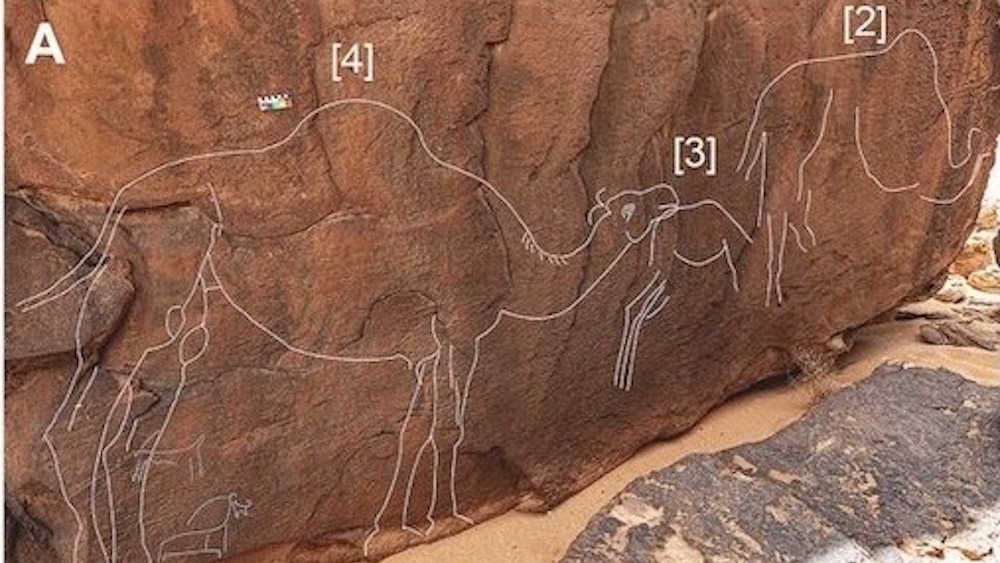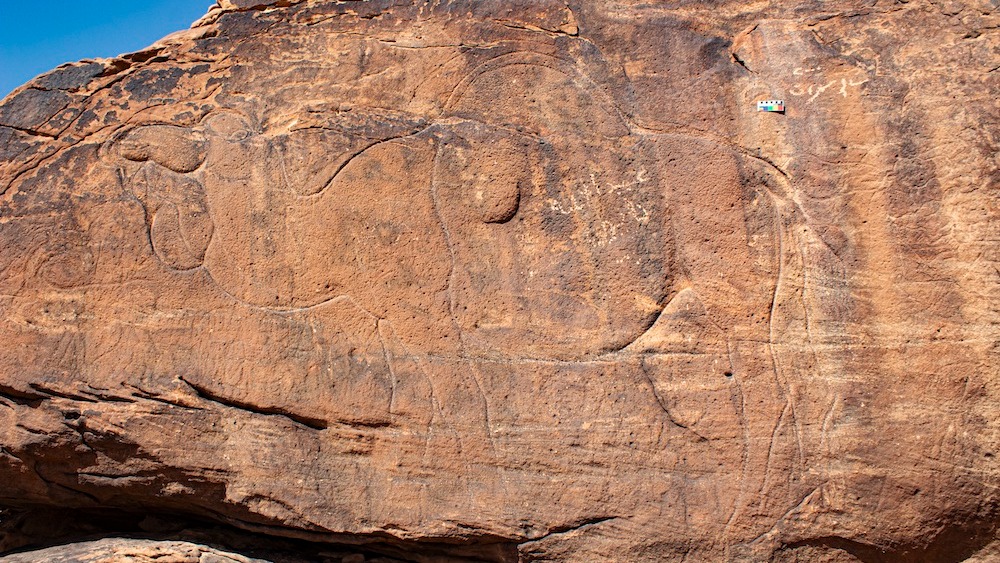Mysterious and 'beautifully carved' life-size camel carvings discovered in Saudi Arabian desert
Life-size carvings of camels have been found in the Saudi Arabian desert, but archaeologists aren't sure who created them and when.

Archaeologists have documented a cluster of carvings depicting camels on a rock outcropping near the southern edge of Saudi Arabia's Nafud desert.
The monumental artwork portrays a dozen life-size wild camels, a now-extinct species that once roamed this swath of the Arabian Peninsula desert thousands of years ago but has never received a scientific name, according to a study published in the December issue of the journal Archaeological Research in Asia.
While the site, named Sahout, had been recognized by other archaeologists for some time, this is the first time someone noticed the camel carvings on the outcropping.
"We learned about the site from another paper — but the panel was difficult to find because its location wasn't precise, and this isn't an easy landscape [to navigate]," study lead author Maria Guagnin, a postdoctoral researcher at the Max Planck Institute of Geoanthropology in Germany, told Live Science.
Finding the outcropping in the sand dunes wasn't the only challenge. Because the carvings have newer etchings overlapping the camels, there's an added layer of mystery surrounding which culture created the artwork and when.
Related: Stone tools and camel tooth suggest people were in the Pacific Northwest more than 18,000 years ago
"The outcroppings contain a dense cluster of rock art from many different periods," Guagnin said. "You can see that the carvings were done in various phases and are stylistically different."
Get the world’s most fascinating discoveries delivered straight to your inbox.
It also doesn't help that most of the carvings were made inside crevices, making them difficult to access and radiocarbon date.
However, radiocarbon dating of two trenches and two hearths nearby indicate that the Sahout site was repeatedly occupied between the Pleistocene (2.6 million to 11,700 years ago) and the Middle Holocene (7,000 to 5,000 years ago), according to the study.
The naturalistic style of the carvings depicting the animals' fur and sex also offer clues about when they were created.
"What's most striking about the beautifully carved camels is that most of them are male," Guagnin said. "Some of the carvings contain camels showing their dulla, an organ that hangs out of a male camel's mouth [that is used to attract females]."
Based on this symbolism alone, the researchers hypothesized that the art could've been made during mating season. This is also known as rut and occurs between November and March, according to Veterinary World.
"The feral camels also hadn't [molted their fur] yet and still had their winter hair," Guagnin said.
More research is needed to figure out the significance of this site. "There's no known water source, so there might have been something else that brought people here," Guagnin said. "Perhaps it was a good stopping point on their way to another location. It must've been an important location, but right now, we're not sure why."
Sahout isn't the only site in Saudi Arabia where camel carvings have been found. In 2018, archaeologists discovered a 2,000-year-old "parade" of life-size camels in the province of Al-Jouf in the northwestern Saudi desert.
Jennifer Nalewicki is former Live Science staff writer and Salt Lake City-based journalist whose work has been featured in The New York Times, Smithsonian Magazine, Scientific American, Popular Mechanics and more. She covers several science topics from planet Earth to paleontology and archaeology to health and culture. Prior to freelancing, Jennifer held an Editor role at Time Inc. Jennifer has a bachelor's degree in Journalism from The University of Texas at Austin.



